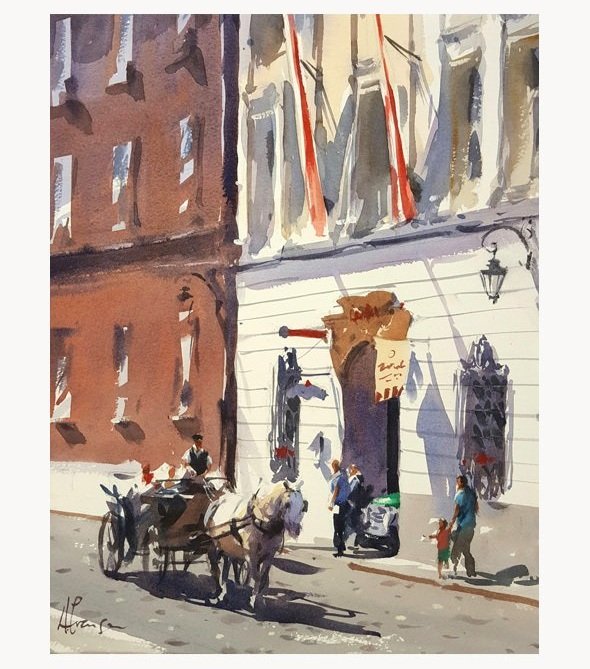Capturing Character
Gabor recently saw a street scene painting of Andy Evansen’s where Andy conveyed the true character of the scene (see an example below). Sometimes, we as painters need to focus on the character of a scene rather than using a formulated painting method.
One of Andy’s advantages when painting is living in an area with all four changing seasons. He really had to learn to pay attention to changing light, trees, and entire landscapes that change drastically. Andy also recommends traveling and seeing different cultures/ architecture to gain perspective of the differing characters of different cities and landscapes. He focuses on doing justice to the particular place and scene as best as he can. There is a fine line between capturing the character of a scene while staying with your personal painting style. You want people to recognize your style and know its yours. For example, Andy doesn’t change the colors of his signature palette if he is painting in New Mexico vs. Minnesota, he just tones them down or brightens them. The palette is similar and the marking is his same approach.
Another way to capture a unique character is painting from life, rather than consistently in the studio. This way, you are reacting in a more intimate way to the scene in front of you. In the studio, it is easy to default to formulate methods. Being in the scene makes you respond in the moment, which makes a huge difference to the character of a painting. It is similar to learning figure drawing from a photograph, versus having a real model standing there. Andy paints in the studio consistently, but his experience from painting from life translates back to his skills in the studio. He has spent enough time outside to know how to adjust edges and get a sense of distance and depth in a painting. We tend to focus on one area in a scene and the rest is just peripheral vision. Adjust your view to the areas in your peripheral vision to capture the character, rather than honing in on one area too much. A painter needs to convey as much as they can about the subject and how they are interpreting it for the viewer; this is character.
Want more tips like this from Andy?
Join the waitlist for Andy’s upcoming mentoring course, “Watercolors For All Seasons” with open enrollment coming soon. Spaces are Limited. Click to find out more:
If you aren’t quite ready for the mentoring course, check out Andy’s video download package, ”A Sense of Light in Watercolor” to start off:
To get more into the topic of character, listen to Gabor and Andy on the Paint & Clay podcast here.


